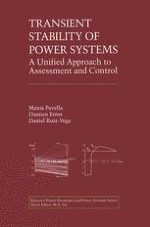The market liberalization is expected to affect drastically the operation of power systems, which under economical pressure and increasing amount of transactions are being operated much closer to their limits than previously. These changes put the system operators faced with rather different and much more problematic scenarios than in the past. They have now to calculate available transfer capabilities and manage congestion problems in a near on line environment, while operating the transmission system under extremely stressed conditions. This requires highly reliable and efficient software aids, which today are non-existent, or not yet in use. One of the most problematic issues, very much needed but not yet en countered today, is on-line dynamic security assessment and control, enabling the power system to withstand unexpected contingencies without experienc ing voltage or transient instabilities. This monograph is devoted to a unified approach to transient stability assessment and control, called SIngle Machine Equivalent (S1ME).
